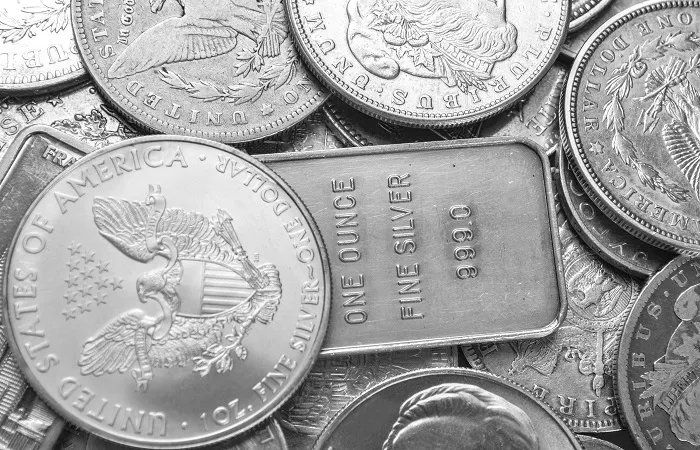Silver (Ag) has been used by humans for thousands of years, serving as currency, jewelry, and a vital component in various industrial applications, including electronics, batteries, and solar panels. Its unique properties, such as high electrical and thermal conductivity, antibacterial qualities, and reflectivity, make it indispensable in modern technology.
While silver can be found in its elemental form, it is more commonly extracted from ores in combination with other metals. This article explores the primary locations and geological settings where silver can be found, detailing specific case studies that illustrate the significance of silver mining in different regions worldwide.
Sources of Silver
Silver can be sourced from several natural occurrences, primarily in ore deposits. Understanding these sources requires an overview of the types of deposits where silver is commonly found:
Primary Silver Mines: These are mines where silver is the main product. The ore typically contains a high concentration of silver, making it economically viable to extract.
By-Product Silver Mining: Silver is often produced as a by-product of mining other metals, such as gold, copper, lead, and zinc. In this context, silver may not be the primary focus of mining operations, but it still contributes to the overall yield.
Recycling: Silver can also be obtained through recycling scrap metal, particularly from electronics, jewelry, and photography materials.
Seafloor Mining: Recent technological advancements have allowed for the exploration of silver deposits in oceanic environments, particularly in hydrothermal vent systems.
Secondary Deposits: Silver can be found in sedimentary deposits as well, often associated with other minerals.
Major Sources of Silver
Mexico
Mexico is the world’s largest producer of silver, accounting for a significant portion of global output. The country is home to several large silver mines, including:
Penasquito Mine: Located in Zacatecas, it is one of the largest silver mines in the world, producing millions of ounces annually. The mine extracts silver along with gold, lead, and zinc.
Fresnillo Mine: Also in Zacatecas, this mine is known for its high-grade silver deposits and is operated by Fresnillo PLC, one of the leading silver mining companies.
Mexico’s favorable geology, particularly the Sierra Madre Occidental mountain range, provides rich silver-bearing ore deposits that have been exploited for centuries.
Peru
Peru ranks second in silver production, with significant mining operations in the Andes Mountains. Notable silver mines include:
Antamina Mine: This large polymetallic mine produces copper and zinc, with substantial silver by-products.
Shahuindo Mine: Located in northern Peru, this mine focuses primarily on silver and gold extraction.
Peru’s diverse geology and rich mineral deposits make it a prime location for silver mining, contributing significantly to the country’s economy.
Chile
While primarily known for its copper production, Chile also has considerable silver deposits. The country’s major silver sources include:
Cerro Blanco Mine: This mine, located in the Atacama Desert, produces silver along with gold and copper.
El Indio Mine: Known for its high silver grades, this site has historically contributed to Chile’s silver output.
Chile’s mineral-rich Andes range serves as a critical area for silver mining, taking advantage of the geological conditions conducive to silver deposits.
China
China is another leading producer of silver, with extensive mining operations across the country. Noteworthy mines include:
Shaanxi Province Mines: This region is known for significant silver deposits, often extracted as a by-product of lead and zinc mining.
Yunnan Province: Home to several silver mines, Yunnan contributes to both primary and secondary silver production.
China’s vast mining industry benefits from state-of-the-art technology, allowing for efficient extraction and processing of silver.
Russia
Russia has significant silver reserves, primarily located in Siberia. Key sources include:
Polymetal International’s Mines: Operates several silver mines in Russia, notably in the Magadan region.
Silver Lake Mine: Known for its high-grade silver ore, this mine is part of a larger complex producing various metals.
The Russian government’s support for mining infrastructure has bolstered silver production, making it a key player in the global market.
United States
The U.S. has a rich history of silver mining, particularly in the western states. Important sources include:
Nevada: Home to several large silver mines, including the Comstock Lode and the Ruby Hill Mine, which primarily extract silver alongside gold.
Idaho: Known for its silver deposits, especially in the Coeur d’Alene region, which has been a significant mining area since the late 19th century.
The U.S. mining industry has evolved, with increased emphasis on environmental regulations and sustainable practices in recent years.
Australia
Australia is also known for its silver production, often as a by-product of gold mining. Significant sources include:
Broken Hill: Famous for its rich silver-lead-zinc deposits, this area has a long history of silver mining.
Silver Mines Limited: A company focused on developing silver projects in New South Wales, with exploration efforts aimed at expanding silver production.
Australia’s rich geological diversity supports silver mining, contributing to its position in the global market.
Conclusion
Silver is a precious metal found in various geological settings around the world. From the prolific mines of Mexico and Peru to the advanced operations in China and Russia, the sources of silver are as diverse as they are economically significant. As demand for silver continues to rise, particularly in technology and green energy applications, the exploration and extraction of silver from these diverse sources will remain critical. Whether through traditional mining practices or innovative approaches such as recycling and seafloor mining, silver will continue to play a vital role in the global economy.
Related topics:
- KDM vs. 916 Gold: Understanding the Differences in Purity
- What Is SPDR Gold? A Comprehensive Guide
- What Is Litco Gold? Your Guide to Precious Metals Investment


